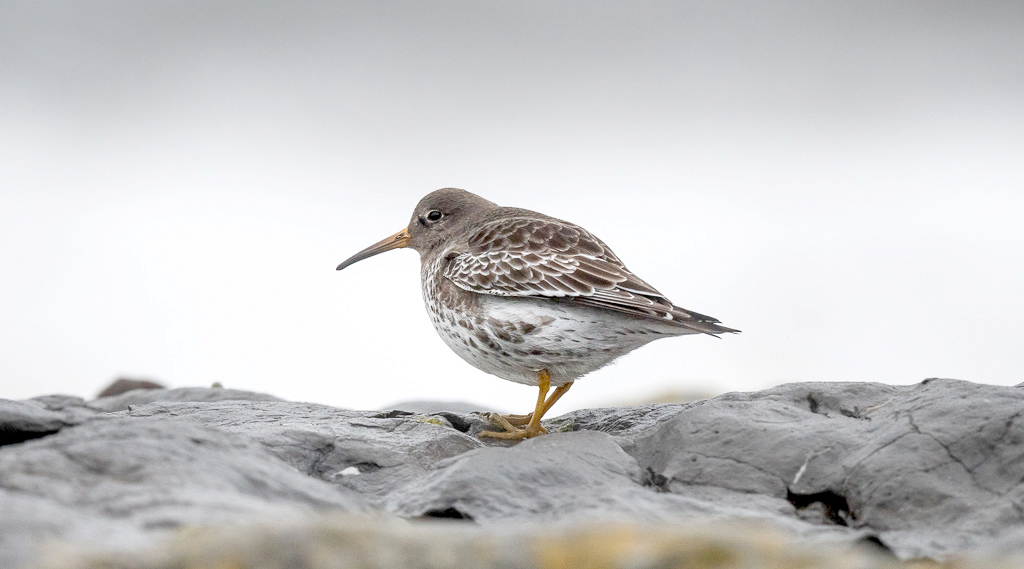
In the last couple of weeks I’ve spent some time with the Purple Sandpipers that spend the winter on our rocky shores down here in South Wales, the wintering population of Britain is roughly estimated at about 16,000. They’re a bird that feeds and roosts in the littoral zone and often as close to the surf as possible, rarely venturing above the high tide line.
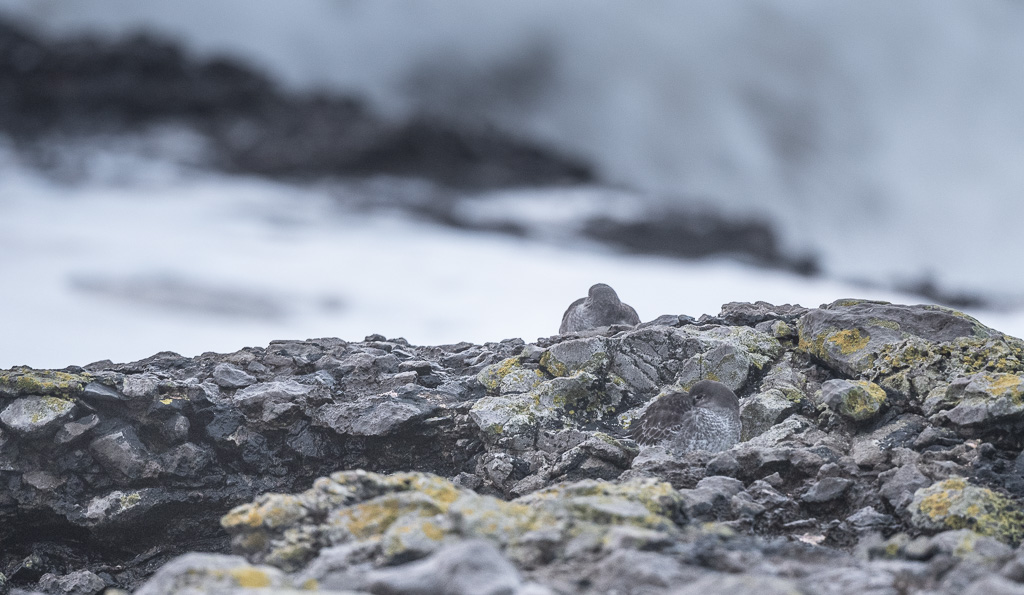
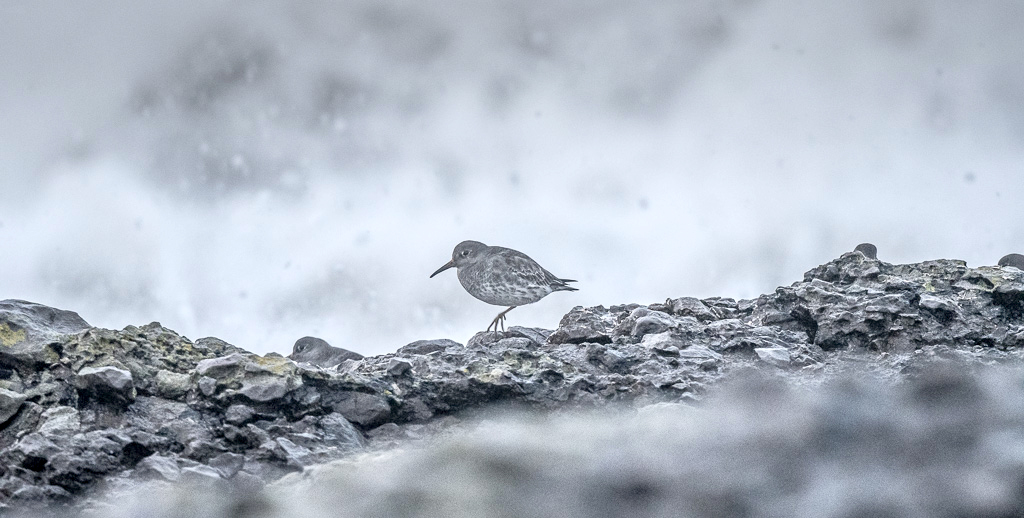
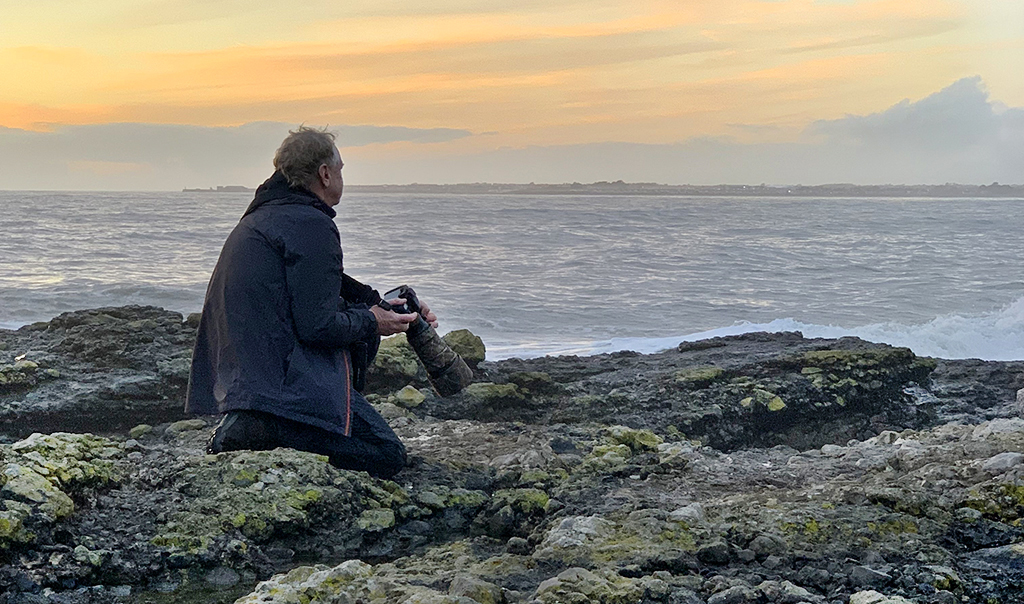
Their colouration can make them difficult to pick out until they break the horizon between the rocks and sea. They gather together at the waters edge, dark plumage against dark rock only lifting when a breaking wave threatens to overwhelm them. A very rare breeder, perhaps one or two pairs, in Britain, its breeding grounds are in the far north up in the Arctic latitudes, with a substantial population in Greenland and Iceland.
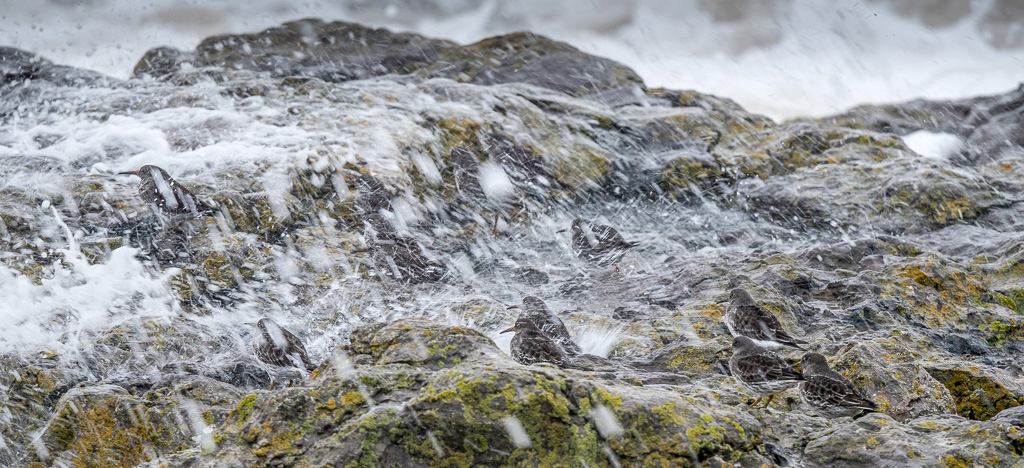
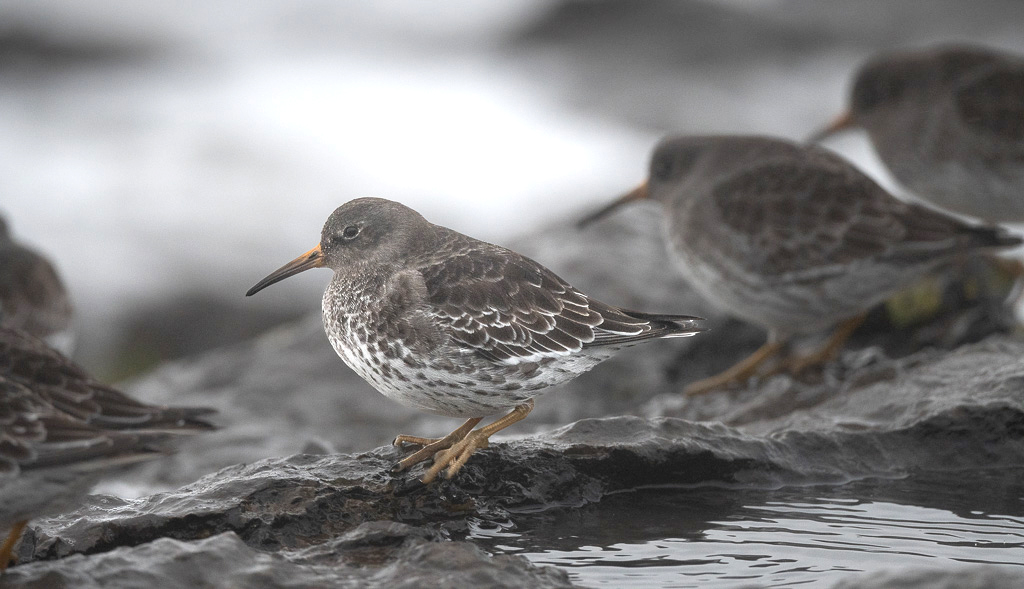

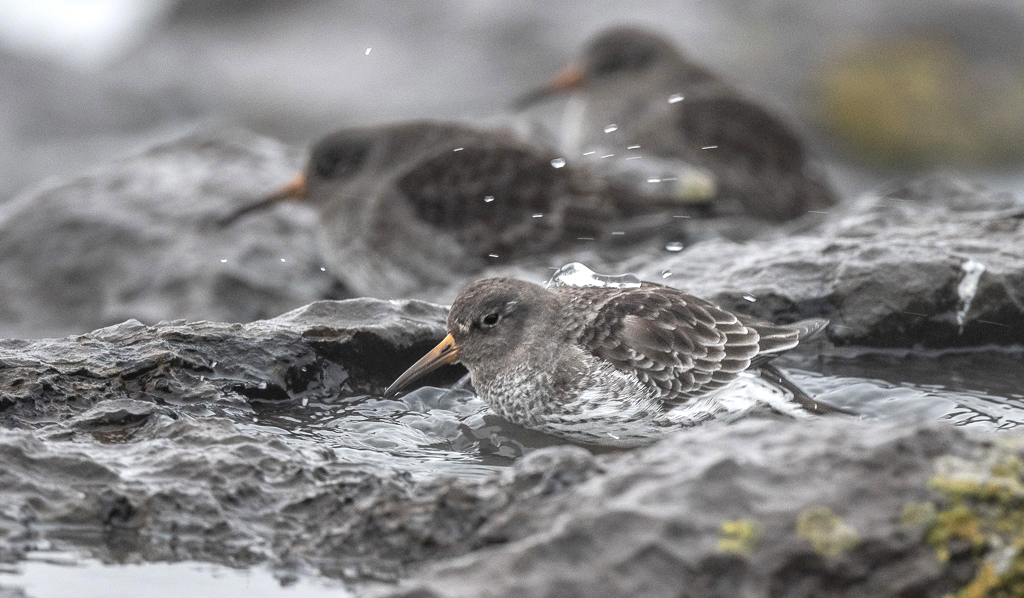
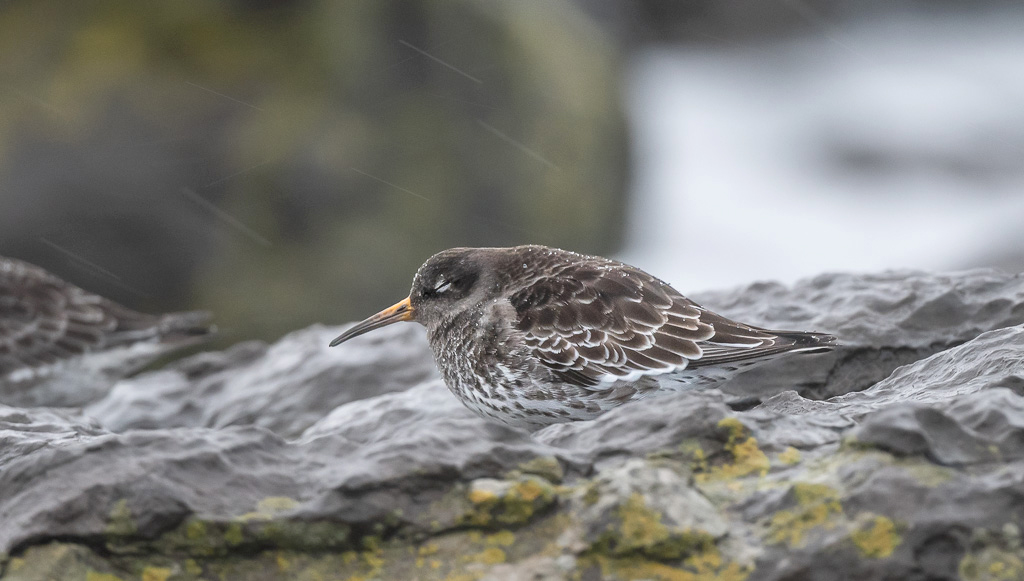
I have mainly photographed the Purple Sandpiper on the west coast Britain, along the rocky shores of Wales and Scotland, but I also caught up with a single bird at Diamond Beach in Iceland, where the birds are bigger than most other populations and show a good deal of genetic variation in comparison. Diamond Beach is an extraordinary place with ice breaking off continually from the Jökulsarlón glacier. Was my Iceland bird bigger? Difficult to tell with nothing to compare it against. It was however, like the species as a whole, very confiding allowing to get within a couple of metres and still not taking flight.
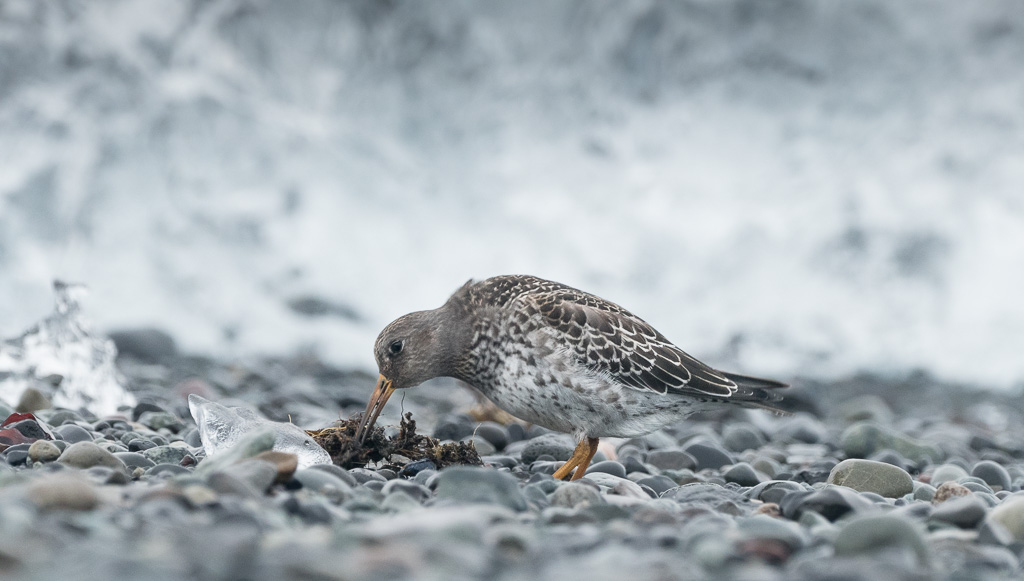
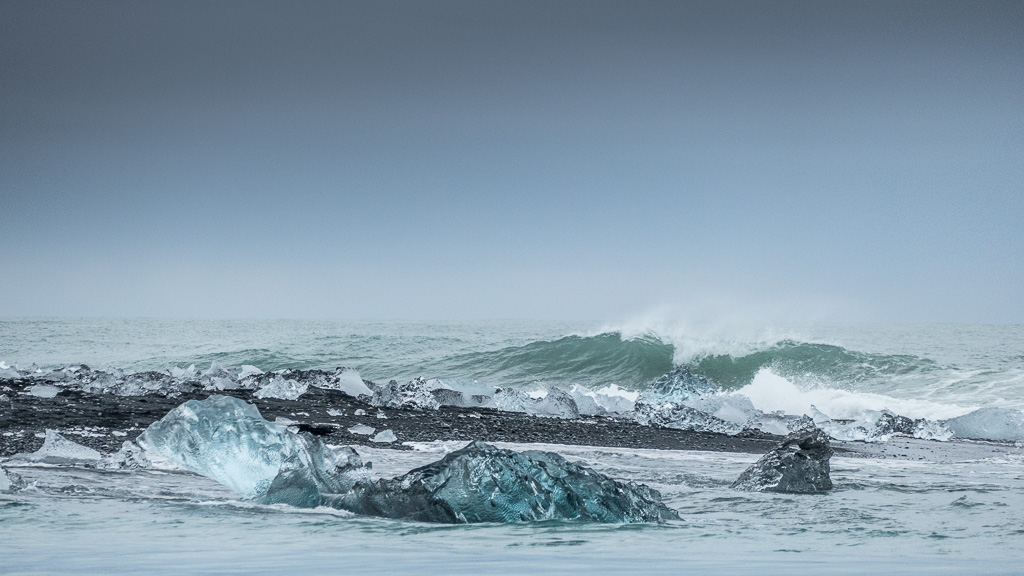
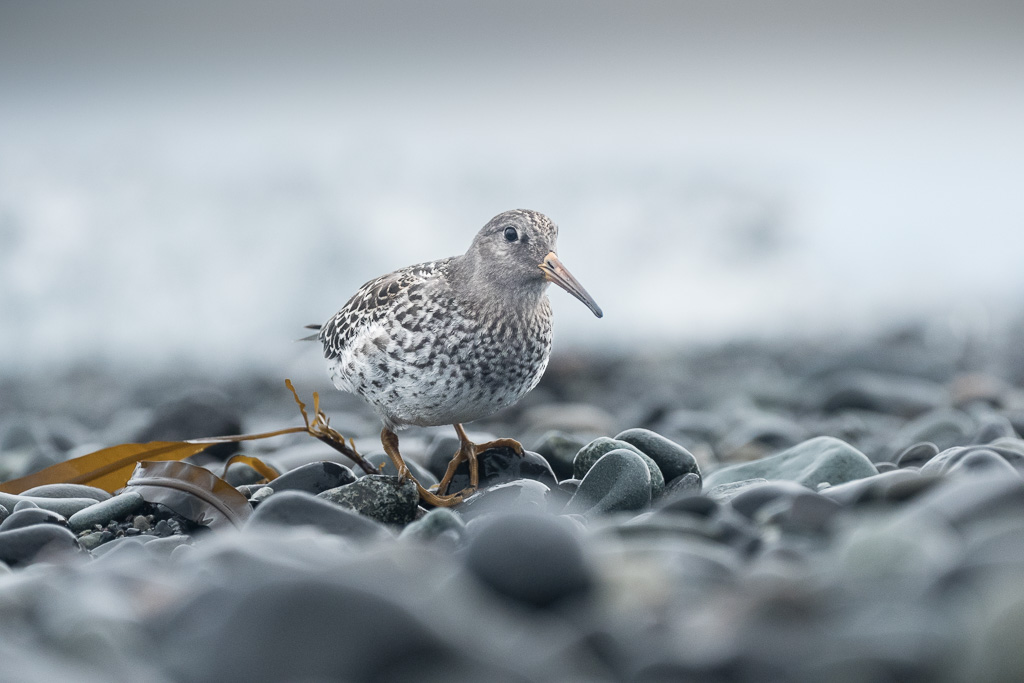
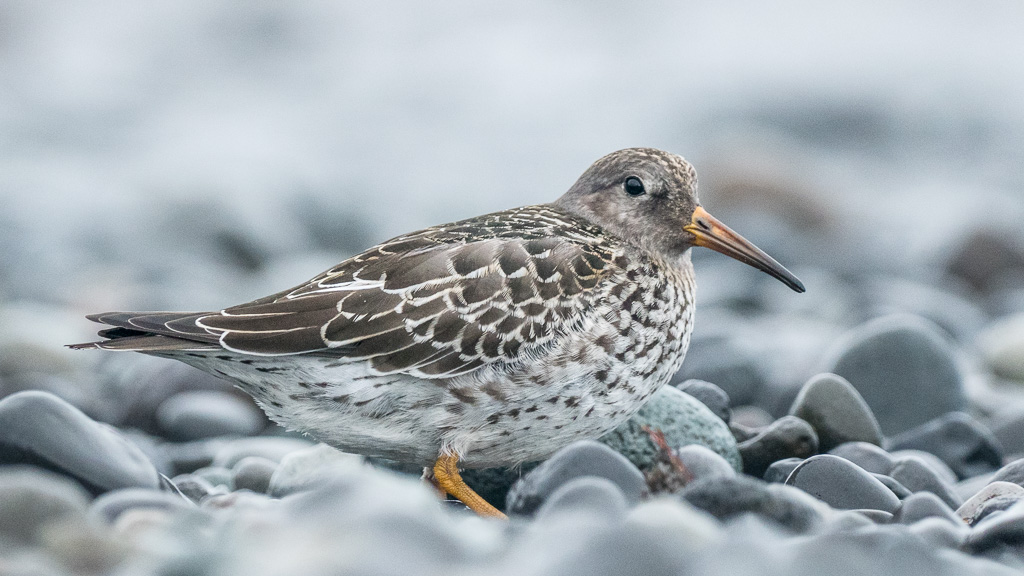
As good a place as anywhere to catch up with these hardy waders is on the rocks at the seafront in Porthcawl here in South Wales with the Purple Sandpiper being quite site faithful on both its breeding grounds and wintering quarters. On a recent visit at the back end of December 2022 there where two groups close to each other, one with fourteen birds and the other with eight. So twenty two in all, which is a really high count for this area. The previous visit a week before I couldn’t find any there but finally caught up with seven on the rocks at Ogmore, a little further along the coast and another reliable spot.


I stayed with the group of twenty two for a couple of hours and positioned myself downwind of them so’s to have them side on and facing me. Like all shore birds they will always face into the wind when roosting, feeding, taking flight and coming in to land. The birds at Porthcawl seemed content in sleeping for a good deal of the time with head tucked in to wing. It was an incoming tide so they were being slowly pushed up towards me and I could hold my position as they grew larger in my viewfinder. An occasional strong tidal wave was the only thing that would disturb them from sleep, when they would feed in amongst the fissures of the rocks on inter-tidal invertebrates; isopods and amphipods along with the larvae of the Kelp Fly.
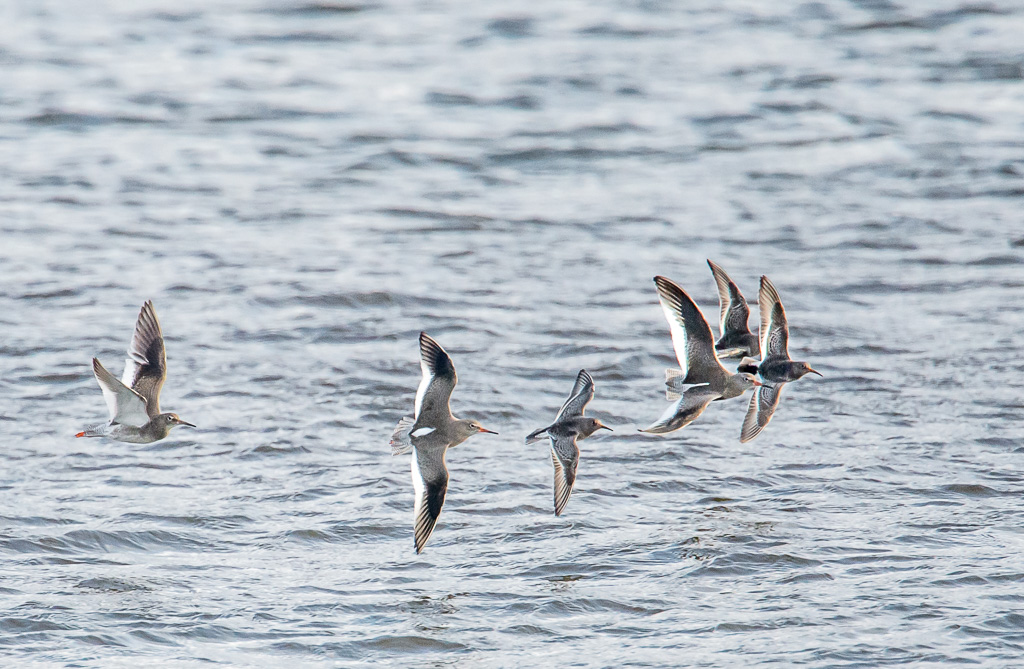
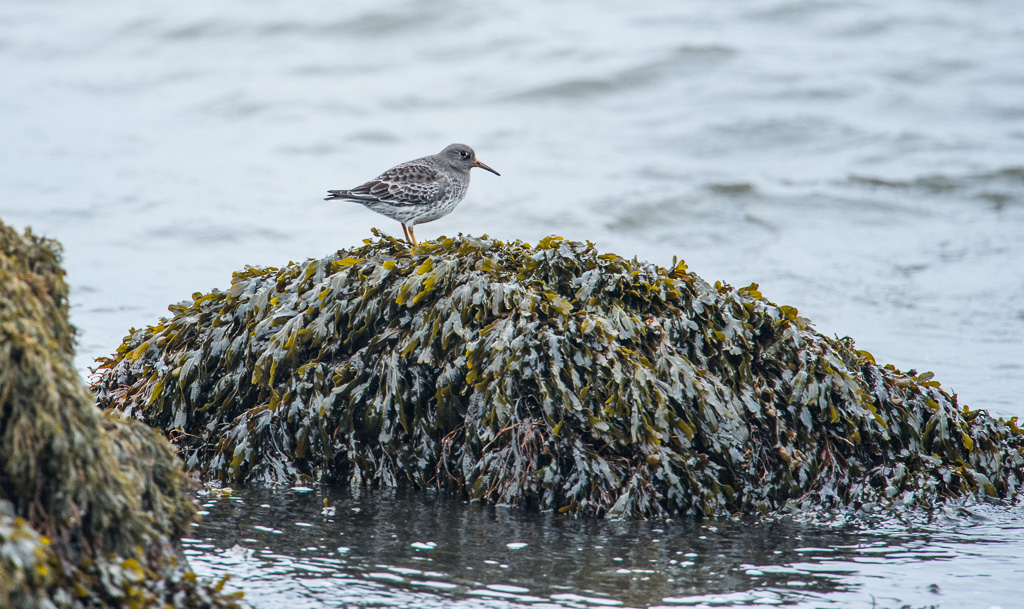
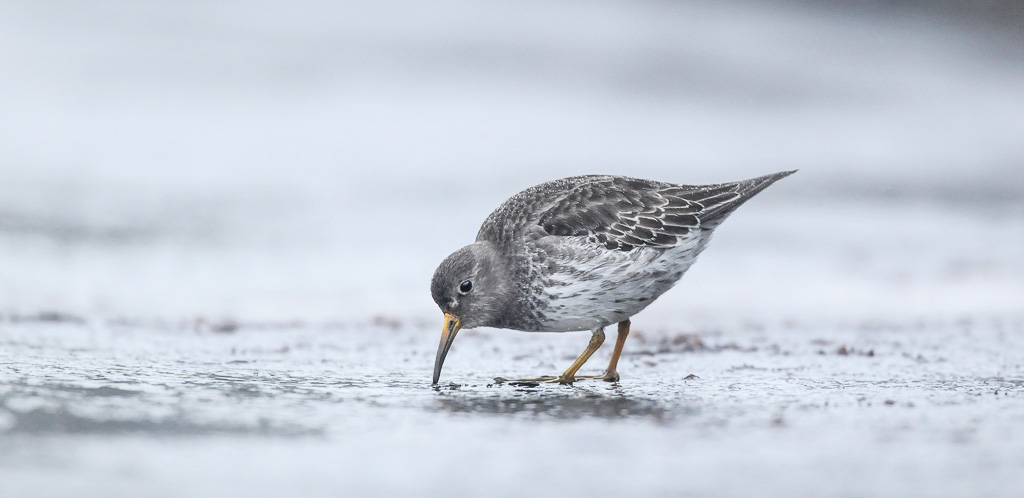
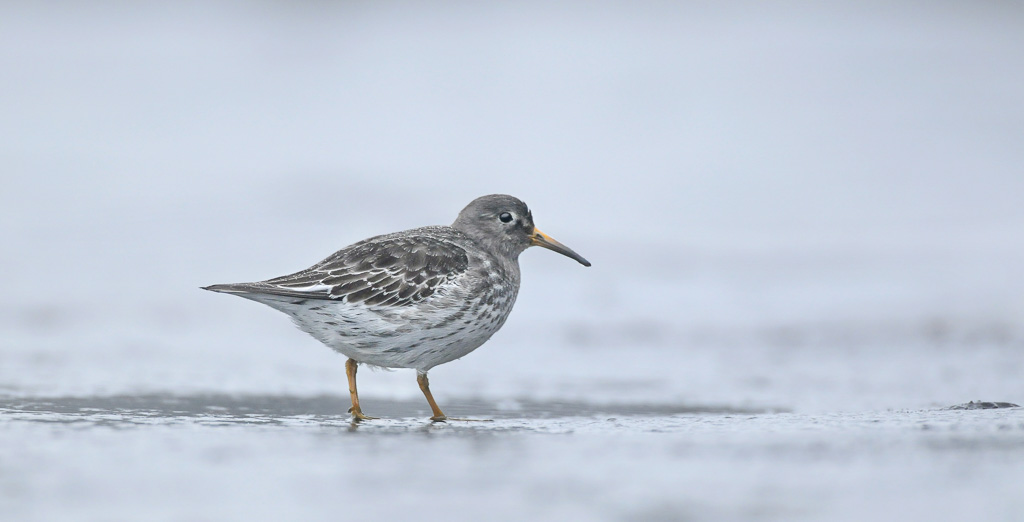
Why purple? I’ll quote from ‘Birds of the British Isles’ Bannerman and Lodge,
A robust, sturdy little bird, this sandpiper resembles the Knot rather than the Dunlin in Build. Amongst others of equal size, it can be readily identified by its yellow legs and dark plumage. Apart from a touch of white at the throat, the head and neck are dusky-almost sooty-brown. The back is yet darker, and it is here that the feathers show the bluish glosses which have earned the bird its name. Most of the dark breast feathers have white fringes, broadest on those near the abdomen; while the flanks are white conspicuously streaked with brown.
With the spring moult, much of the characteristic sheen disappears from the purple sandpiper’s plumage, and it becomes an altogether greyer duller bird.
It’s the bird after the spring moult that we see on our shores.

No comment yet, add your voice below!